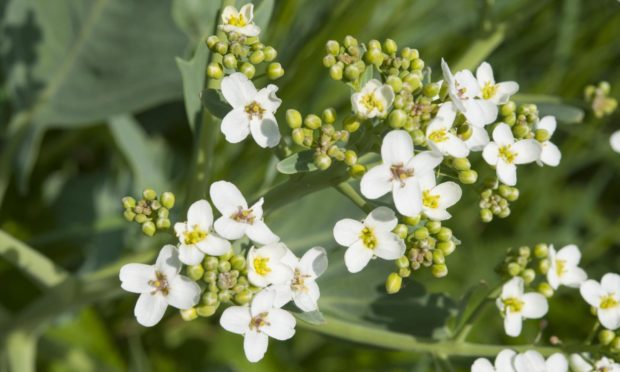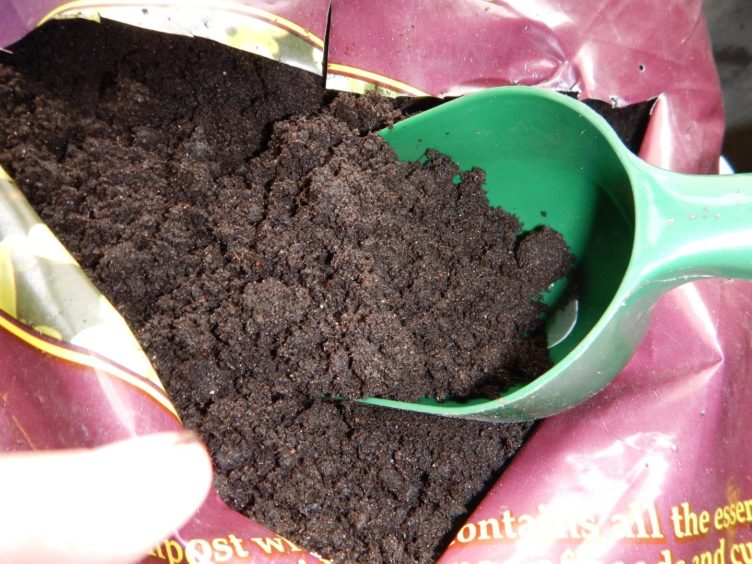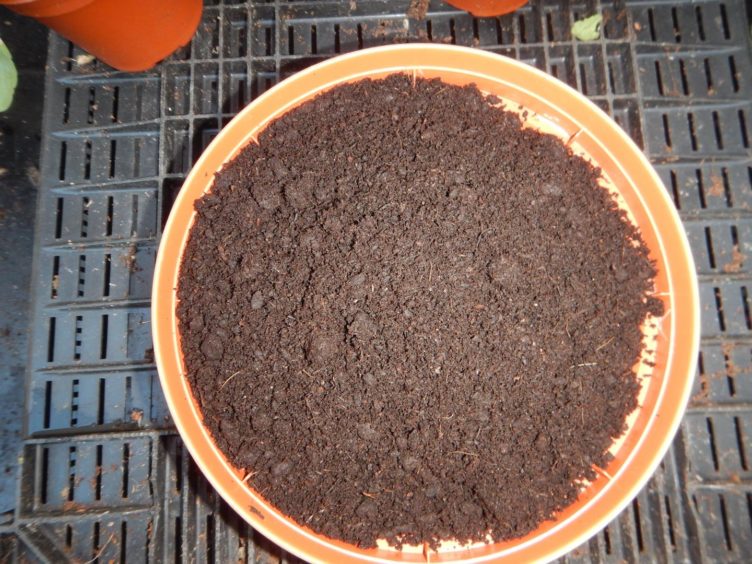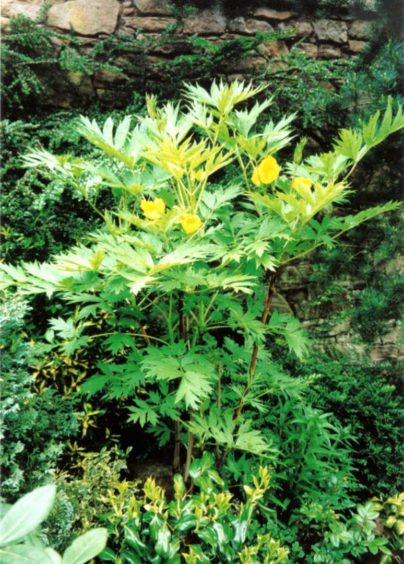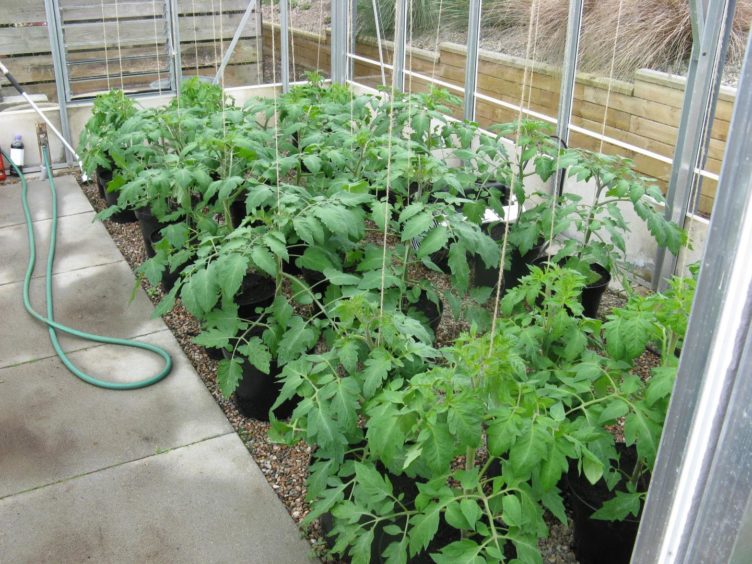Well, it should be full steam ahead now to get the tubs, baskets and beds planted with summer bedding despite the vagaries of the weather patterns at the present time.
I had one of these “blethers in passing” with a neighbour the other day, he and his wife have a superb wee garden and he was metaphorically “scratching his heid” not knowing what to plant out right now and what would be the better of another week’s shelter in the cold frame. I suggested that he get busy as soon as we had a decent dry day.
Second question – when planting up tubs, removing the bulbs and remnants of primulas, wallflower, etc, do you need to replace the soil/growing media in the tub?
My answer – not all of it.
For years now, I simply empty the remaining soil into my barrow and create a 50:50 mix of the old with newly purchased compost. It works for me.
Whether I will be able to do that in the future will depend on the availability of a new compost at an affordable price. You will jalouse that I am thinking about the news regarding the banning of peat-based composts. I have little doubt that further work by our scientists and commercial organisations will solve the problem for gardeners.
Actually, there are some excellent peat-free products available now but more competition could maybe bring the prices down a tad.
In the meantime, I look forward to the news that peat-fired power stations are to be closed down. (None in the UK to my knowledge but still three in Ireland) Then the case for banning the practice of moor-burning might also be more easily made.
What’s so important to the gardener about peat? Simple answer, as a well-matured, weed and disease-free organic material, when mixed with mineral additives (sand/grit/soil) and a measure of plant foods (fertiliser), it copies the very best of natural soil growing conditions wherever you may be.
I sometimes feel that I should start each week with the words “Dear friends…”, just like a letter, because there is seldom a week passes without a comment or question on something I’ve said.
Last week it was about protecting plants from slug damage using a commercially available spray on product. Response from one colleague: “I recall that my mother sprinkled broken eggshells round her hostas. It must have been successful because she repeated the practice every year about this timer.” Spot on say I, and that reminded me of a modification. This, from a lady I visited in Durness some years ago: “Oh yes,” says she, “I find it more effective to put the egg shells in the oven for a wee while first.” I’ve never had the heart to try it!
Question from a regular: About five years ago, I sowed Crambe cordifolia from a well-known seed merchant and some Tree Peony seed given me by a chum. Both have grown well but neither has flowered. Is there any treatment to be given to bring them to their senses?
This is a reply for patient gardeners. In our last garden, I had a Paeonia. ludlowi which came in to flower about this time. I bought it as a young plant and it took five years to flower, after planting out.
From seed I think you might have to wait a little longer. The same situation may pertain to Crambe, a wonderful herbaceous perennial from the cabbage family but I would add in that it does prefer a deep, well-drained soil that is slightly alkaline. To add to that, although it is a native of the Caucasus Mountains and therefore quite hardy, it should be sheltered from strong winds.
It might be worth checking the soil pH too. You might need to add a handful of lime, even now. but don’t expect an instant response. Have patience.
Now to the greenhouse. As I have mentioned already this season, now that I am at home most days, I can keep a check on the greenhouse from time to time throughout the day and by jingo it has been necessary – one minute sleet showers and the next, bursts of bright sunshine. The automatic ventilators in the roof work well to keep the temperature from reaching extremes (one way or the other).
The little electric fan heater is still switched on to help with air circulation. Why, do I hear you ask? In the commercial situation, to achieve optimum results, we tried to keep the night temperature no lower than 15C and from daylight, as quickly as practicable, rising to 21C, to make maximum use of the daylight hours.
That was from a February planting and by now we would be started cropping. I’m not expecting to achieve anything like that but, achieving the six to seven degree difference between day and night should produce good results.
The other significant practical requirement is to maintain a slightly humid atmosphere around the plants. In recent days, by mid-morning, if there is a bit of heat in the air, clear sky, good light, maybe even a bit of sunshine, I dampen down the floor, under the bench and around the tomato plants in their growbags. This is not watering as such, this is to create a humid atmosphere.
As the days lengthen, I might repeat that about mid-afternoon at the latest. These slightly humid conditions, coupled with the warm temperature will cause the pollen in the flowers to burst leading to a good “set” of fruit.
An occasional splash of water over the plants, late morning, as well as cooling the foliage may also help to “budge” the pollen grains within the flowers. If the weather is not suitable, a shake of the plants in the passing will do instead.
At the other end of the scale, knowing how our weather can be very erratic and changeable, you must try to avoid creating cold and damp conditions to guard against the development of Botrytis (Grey Mould) on the foliage.
